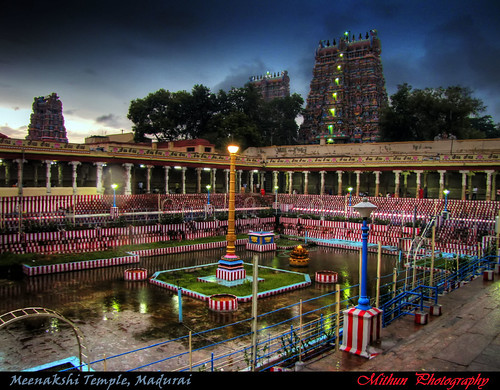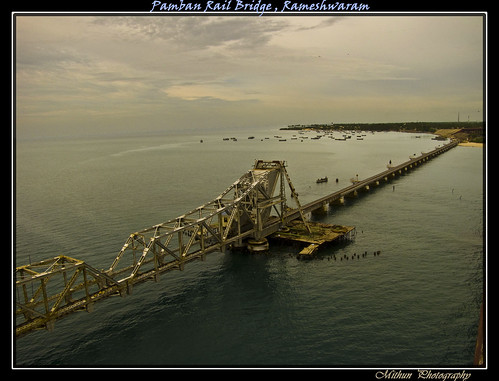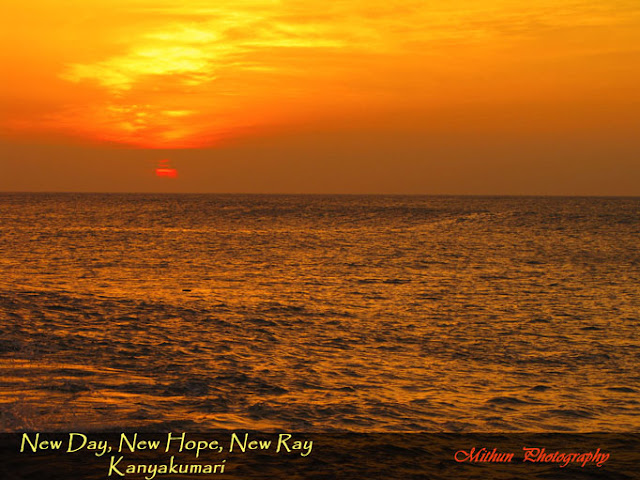 |
 |
 |
 |
 |
 |
 |
 |
 was built by Ariyanatha Mudaliar in 1569. He was the Prime Minister and General of Viswanatha Nayak of the first Nayaka of Madurai (1559-1600 A.D.). He was also the founder of Poligar System, the quasi-feudal organization of the country, which was divided into multiple palayams or small provinces and each palayam was ruled by a palayakkarar or a petty chief. At the entrance of the Mandapam, we can still see his statue; the majestic pose of Ariyanatha Mudaliar seated on a beautiful horse-back which flanks one side of the entrance to the temple. The statue is still periodically crowned with garlands by modern worshippers. Each pillar is carved and is a monument of the Dravidian sculpture. There is a Temple Art Museum in the hall where icons, photographs, drawings, and other exhibits of the 1200 years old history are displayed. Just outside this mandapam, towards the west, are the Musical Pillars. Each pillar, when struck, produces a different musical note. The kalyana mandapa, to the south of the pillared hall, is where the marriage of Shiva and Parvati is celebrated every year during the Chithirai Festival in mid-April.
was built by Ariyanatha Mudaliar in 1569. He was the Prime Minister and General of Viswanatha Nayak of the first Nayaka of Madurai (1559-1600 A.D.). He was also the founder of Poligar System, the quasi-feudal organization of the country, which was divided into multiple palayams or small provinces and each palayam was ruled by a palayakkarar or a petty chief. At the entrance of the Mandapam, we can still see his statue; the majestic pose of Ariyanatha Mudaliar seated on a beautiful horse-back which flanks one side of the entrance to the temple. The statue is still periodically crowned with garlands by modern worshippers. Each pillar is carved and is a monument of the Dravidian sculpture. There is a Temple Art Museum in the hall where icons, photographs, drawings, and other exhibits of the 1200 years old history are displayed. Just outside this mandapam, towards the west, are the Musical Pillars. Each pillar, when struck, produces a different musical note. The kalyana mandapa, to the south of the pillared hall, is where the marriage of Shiva and Parvati is celebrated every year during the Chithirai Festival in mid-April.------ Ramanathaswamy Temple, Rameswaram ------
Pooja procedure
 |
 |
--Suchindram--
 Vivekananda Rock is about a hundred meters from the shore and a regular ferry service exists between the mainland jetty and the rock. The tickets are Rs 20 for a ride. The Rock has two Mandaps (halls); one belonging to Swami Vivekananda and the other belonging to a Holy Foot. The Holy Foot is a foot shaped carving found on the rock and is believed to be the footprint of Goddess Kumari who stood on this rock on one leg and performed the Tapasya (penance). The Rock memorial has a tall statue of Swami Vivekananda whose photographs are not allowed to be taken from inside the hall. Below the statue was mentioned the year of death of the Swamiji and the "probable" dates when Swamiji attained Samadhi on the rock. Here you can see both sunrise and sunset and it is one of the main tourist attractions here. Golden Hues of the Horizon are very impressive with a silhouette of the Rock Memorial. Timings: 7:30 am to 4:00 pm. You should enter main gate to the jetty for ferry before 4 pm, after that entry is denied. One can stay at the rock even until after sunset.
Vivekananda Rock is about a hundred meters from the shore and a regular ferry service exists between the mainland jetty and the rock. The tickets are Rs 20 for a ride. The Rock has two Mandaps (halls); one belonging to Swami Vivekananda and the other belonging to a Holy Foot. The Holy Foot is a foot shaped carving found on the rock and is believed to be the footprint of Goddess Kumari who stood on this rock on one leg and performed the Tapasya (penance). The Rock memorial has a tall statue of Swami Vivekananda whose photographs are not allowed to be taken from inside the hall. Below the statue was mentioned the year of death of the Swamiji and the "probable" dates when Swamiji attained Samadhi on the rock. Here you can see both sunrise and sunset and it is one of the main tourist attractions here. Golden Hues of the Horizon are very impressive with a silhouette of the Rock Memorial. Timings: 7:30 am to 4:00 pm. You should enter main gate to the jetty for ferry before 4 pm, after that entry is denied. One can stay at the rock even until after sunset.- Dhyana Mandapam - The meditation Hall with six adjacent rooms
- Sabha Mandapam - The Assembly Hall including Pralima Mandapam (statue section) two rooms, a corridor and an open Prakaram round the Sabha Mandapam
- Mukha Mandapam
- Front Entrance - The steps with two rooms and a corridor below the steps.






















Excellent hoyechhe Mithun...sabbash
ReplyDeletenice..jadio sabta pore uthte parini
ReplyDeletegreat photography... and informative too... will look forward to more such posts...
ReplyDeleteExcellent Mithun...
ReplyDeleteKeep rocking..
wow
ReplyDeleteThis comment has been removed by the author.
ReplyDeleteThis comment has been removed by the author.
ReplyDeleteInteresting blog. It would be great if you can provide more details about it. Thanks you
ReplyDeleteRameshwaram Tour Packages
Many thanks for the exciting blog posting! I really enjoyed reading it, you are a brilliant writer. on Cheap Rameshwaram HotelsI actually added your blog to my favorites and will look forward for more updates. Great Job, Keep it up.. :)Hotels in Rameshwaram
ReplyDeleteThis comment has been removed by the author.
ReplyDeleteThis comment has been removed by the author.
ReplyDeleteThis comment has been removed by the author.
ReplyDeleteThis comment has been removed by the author.
ReplyDeleteThis comment has been removed by the author.
ReplyDeleteThis comment has been removed by the author.
ReplyDeleteThis comment has been removed by the author.
ReplyDeleteThis comment has been removed by the author.
ReplyDeleteThanks For Sharing This Great Post Dude
ReplyDeletePlots in Hoskote
A real nice post on Rameshwaram tour which is considered to be extremely holy and sacred by Hindus. To know all the more about Rameshwaram Tour, just log on to: http://easytouristguide.com/sea-beaches/rameshwaram-tour-travelling-to-the-holy-land-of-rama.html
ReplyDeleteNice post.
ReplyDeleteKanyakumari - one of the most popular tourist destinations of India is famous throughout the world for Vivekananda Rock Memorial. Find Kanyakumari tour details. To know more on Kanyakumari Tour please log on to: http://easytouristguide.com/sea-beaches/kanyakumari-one-of-the-top-10-tourist-spots-of-india.html
Nice places and images also. You have described almost every famous place of Madurai. Still, there is a lot more to the destination with just some of the other charmers being Vaigai Dam, Gandhi Museum, and Thirumalai Nayak Mahal amongst other lovely Madurai places to visit. Check all places to visit in Madurai.
ReplyDeleteWe give treatment for knee pain, vatham joint pain, Head ache, Head tension, single head ache,Neck pain,shouldier pain, back pain, hip pain,foot pain.we give Ayurvedhic oil massage from head to foot.
ReplyDeleteVisit: http://www.saisiddhavarma.com/
If you come to our Sai Siddha Varma vaithiyasalai,you can relief form this problems. We give u this siddha treatment and varma treatment for your childlessness problems.We can give a wounderful Siddha Ayuirvedha proucts for impotence.
ReplyDeleteVisit: http://www.saisiddhavarma.com/
Thanks for share this blog….We are tour operator for all over India…
ReplyDeleteTour Operators for Kanyakumari
Tour Operators For Ooty
Tour Operators For Kedarnath
Tour Operators For Darjeeling
Hotel Reservations For Shantiniketan
Nice article..
ReplyDeleteOnline Travel Portal
Online Bus Ticket booking
Low Cost Air Tickets Online Booking
Online Hotel Reservations
Holiday Packages India
mobile Bus Ticketing
Online bus Ticket Booking API
flight Booking API
This is awesome! When I recently started solo traveling and blogging, I searched high and low for fellow Indian girls who are traveling on their own to seek guidance and inspiration. Take Self drive car on hire and travel best part of our country. Checkout amazing offers and discount on Self drive car on hire
ReplyDeleteWow what an amazing post about your travel experience.I loved reading your travelogue.Thank you for sharing the information. Parveen Travels
ReplyDeleteGreat travel experience and thanks for sharing more information about Madurai. Great time to read this blog. Visit those places by booking your bus tickets in SRSTravels and enjoy your trip.
ReplyDeletegreta post if you also want to visite south india Get Ooty Madurai and Rameshwaram Tour package Southern India is also known as the land of gods as it is flooded with temples and places which are having a religious significance.
ReplyDeletePleasant Travelog.. Welcome the points of interest you gave. Would like to visit.
ReplyDeleteTour Packages
Adventures activitis
Its a good blog with good content and beautiful Pictures. Also gathered some needed information From here. Thanks for Sharing.
ReplyDeleteMadurai to Rameshwaram Cabs Online Cab Booking
Great photography... and informative too... will look forward to more such posts. Madurai to Rameswaram Cabs
ReplyDelete